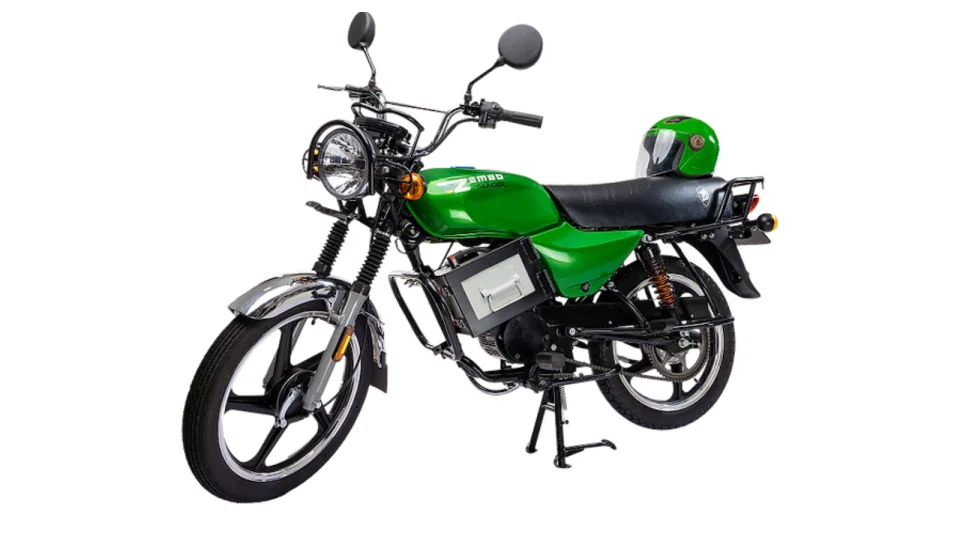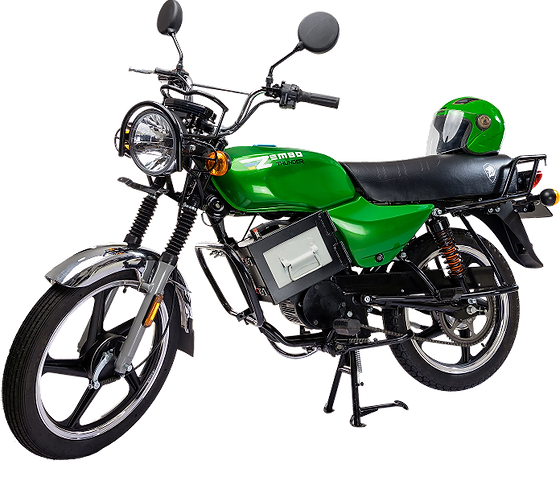Uganda is widely known for being the land of hundreds of thousands of motorcycle taxis (boda bodas) — buzzing around transporting millions of passengers. Uganda also has a special place in the history of boda bodas. That’s because, over 50 years ago, Ali Mayende’s innovation in the border town of Busia sparked a revolution that has become the lifeblood of East African public transport. As detailed in that article from African Arguments, Ali Mayende began ferrying passengers from Busia, a small town on the edges of Eastern Uganda, to the border with Kenya in the 1960s. Others followed, giving birth to the boda boda industry. Now a big phenomenon on the African continent, the motorcycle taxi industry is attracting huge attention and investment. These motorcycle taxis are the heartbeat of the passenger and small goods transport system in a lot of countries in Africa. Close to 30 million motorcycles on the continent are used in this motorcycle taxi industry. With almost 99% of them still being internal combustion engine motorcycles, there is a huge opportunity and a large addressable market for electrification.
The move towards electric vehicles in Africa, especially in this electric motorcycle sector, has mainly been driven by the private sector by small startup companies. Most of the developments in Africa’s electric motorcycle sector have been concentrated along what is now known as the “boda belt.” The boda belt, a term coined by Tom Courtright, is a stretch of countries on the African map where motorcycle taxis have been prominent over the years. This belt stretches from Dar es Salaam, Tanzania, to the outskirts of Dakar, Senegal. There is also significant activity in North African countries such as Morocco, where smaller scooters are used mainly for personal transportation, unlike in East Africa and West Africa, where most of the activity is for commercial transport purposes.
One of the pioneers in Africa’s electric motorcycle sector, fittingly, started in Uganda! I have been following developments in the African electric mobility sector for about a decade now and every time I get an update on what’s going on somewhere on the continent, I get so excited, as it gives us an insight into how much progress has been made over the past couple of decades. Having been on the ground and speaking with founders of hundreds of electric mobility startups and other firms all over the African continent, I always feel confident to say that the transition to electric mobility in Africa will happen a whole lot faster than most people realize. That’s because it has been developed by locally-based companies tackling real pain points and everyday problems faced by public operators and other stakeholders that make up their key target market — all developed from the ground up without much in terms of government subsidies like we’ve seen in other developed markets around the world.
Uganda-based Zembo was one of the startups that kickstarted the electric motorcycle taxi revolution on the African continent. Zembo started with an initial pilot phase from 2017 to around 2020. Zembo then launched version 2.0 of its motorcycle and batteries from 2021, adding 30 swap stations. It is now working on expanding to over 2,000 active riders and over 80 battery charging and swap stations in 2025.
We have a great update from Uganda on Zembo’s impact, a lovely example to show how far along the transition to electric is in Uganda. According to news coming from Uganda, Zembo’s electric motorcycles are contributing to record electrification numbers in the last-mile delivery sector for partners such as Glovo. Glovo recently celebrated a milestone of 5 years operating in Uganda. As part of the celebrations, Glovo opened a new headquarters in Kampala and highlighted that about 40% of Glovo’s couriers now ride electric and there are plans to raise this to even higher levels soon, which will have a big impact on their mission to reduce emissions.
Already, Zembo’s fleet in general (including riders outside the partnership with Glovo) is contributing to lower carbon emissions. Zembo’s website says each Zembo bike avoids 1.5 MT of carbon emissions annually — 7.5 MT over the bike’s lifetime. To date, Zembo’s fleet has resulted in 2,195,945 kg CO₂ reduced, over 1,000 drivers powered, and these drivers have covered 37.9 million km. There is also a great financial incentive for the riders to switch to electric motorcycles, as riders can save up to $500 annually on operational and fuel costs.
According to Zembo’s website, “Zembo’s lithium iron phosphate (LFP) batteries offer a range of up to 80 km on a single charge, providing the performance riders need for their daily work. Built with safe and stable LFP technology, these batteries are designed for years of reliable service. They are also among the most affordable options on the market, costing just UGX 6,000 (USD 1.65) per swap. Zembo’s network in Uganda currently features 30 stations strategically located across the country, with plans to double this number by next year. These stations are conveniently situated at popular fuel stations, ensuring easy accessibility for all riders.” Zembo adds that its motorcycles are designed to withstand diverse terrains, rough roads, and heavy usage associated with boda boda utilisation requirements.
So, the birthplace of the boda boda electrification pioneered by players such as Zembo. Uganda is actually a great place for electrification of motorcycles, and vehicles in general. According to Uganda’s electricity regulator ERA, the country’s installed electricity generation capacity has been on an upward trend for over a decade. This has been driven by the commissioning of various renewable energy projects, mostly hydro generation projects. Notable ones over the past 5 years include the commissioning of Isimba (183 MW) and Karuma (600 MW) hydropower plants. By the end of Q2 2024, Uganda’s installed capacity had reached 2,048.1 MW, a 63.7% increase from 1,251 MW in 2019. This is pretty impressive.
Uganda’s generation mix itself is quite clean. ERA says as of the second quarter 2024, renewable energy projects contributed 95% of all generation capacity of the total installed capacity (2,048.1 MW). Hydroelectricity had the largest share, accounting for 84%. That means a growing number of electric motorcycles in Uganda charge on a grid dominated by renewables. With maximum demand in Uganda hovering at about 1,000 MW, there is a lot of room to grow demand from the electric mobility sector to boost uptake of this excess capacity, ultimately boosting revenues for electricity generation firms. Energy purchases in Uganda by the various consumers were just over 6,000 GWh at the end of 2023, driven mostly by large industries and residential consumers.
Zembo is playing a key role in Uganda’s clean mobility sector. “Powered by renewable energy: Wherever Zembo operates, we rely on renewable energy sources to power our bikes. In Uganda — where 96% of electricity comes from renewables — Zembo utilizes the abundant waters of the River Nile to drive sustainable mobility solutions.”





